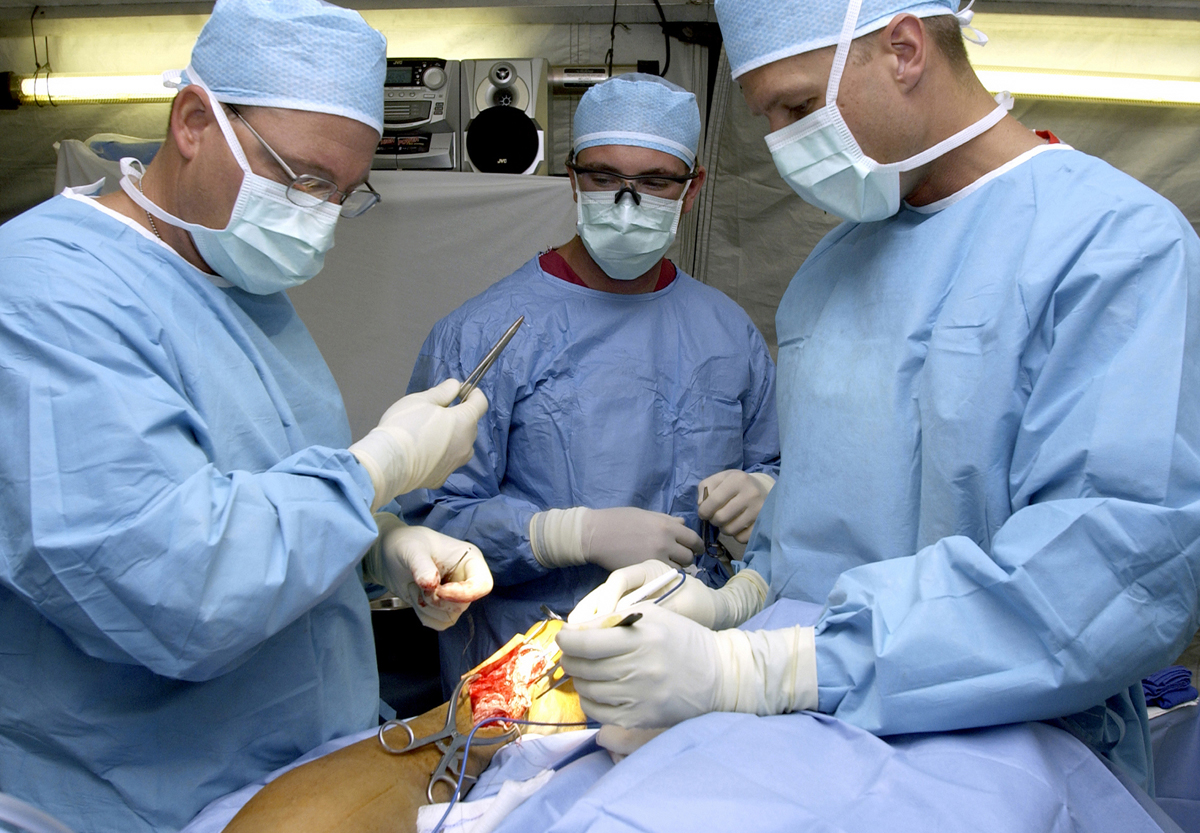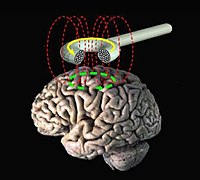
Failures of Sacral Neuromodulation for Incontinence
Sign Up to like & getrecommendations! Published in 2018 at "JAMA Surgery"
DOI: 10.1001/jamasurg.2017.6093
Abstract: This study examines the reintervention rate associated with treatment failures and device malfunctions at 1, 3, and 5 years after sacral neuromodulation surgery. read more here.
Keywords: sacral neuromodulation; neuromodulation incontinence; neuromodulation; failures sacral ... See more keywords

To stage or not to stage?—A cost minimization analysis of sacral neuromodulation placement strategies
Sign Up to like & getrecommendations! Published in 2019 at "Neurourology and Urodynamics"
DOI: 10.1002/nau.24075
Abstract: Sacral neuromodulation (SNM) is a standard therapy for refractory overactive bladder (OAB). Traditionally, SNM placement involves placement of an S3 lead with 1–3 weeks of testing before considering a permanent implant. Given the potential risk… read more here.
Keywords: placement; stage stage; sacral neuromodulation; stage ... See more keywords

Unilateral versus bilateral sacral neuromodulation test in the treatment of refractory idiopathic overactive bladder: A randomized controlled pilot trial
Sign Up to like & getrecommendations! Published in 2020 at "Neurourology and Urodynamics"
DOI: 10.1002/nau.24476
Abstract: To compare treatment success rate in terms of improvement of bladder overactivity between unilateral and bilateral sacral neuromodulation testing. read more here.
Keywords: bladder; treatment; bilateral sacral; sacral neuromodulation ... See more keywords

The role of pulse width manipulation compared to program changes alone for unsatisfactory sacral neuromodulation therapy: A retrospective matched‐cohort analysis
Sign Up to like & getrecommendations! Published in 2020 at "Neurourology and Urodynamics"
DOI: 10.1002/nau.24593
Abstract: Pulse width (PW) influences neuromodulation by its impact on nerve fiber recruitment. A paucity of data regarding the manipulation of PW in sacral neuromodulation (SNM) exists. This study describes the clinical features and outcomes of… read more here.
Keywords: role pulse; pulse width; therapy; sacral neuromodulation ... See more keywords

Two‐year outcomes of the ARTISAN‐SNM study for the treatment of urinary urgency incontinence using the Axonics rechargeable sacral neuromodulation system
Sign Up to like & getrecommendations! Published in 2021 at "Neurourology and Urodynamics"
DOI: 10.1002/nau.24615
Abstract: Sacral neuromodulation (SNM) is a guideline‐recommended treatment with proven therapeutic benefit for urinary urgency incontinence (UUI) patients. The Axonics® System is the first Food and Drug Administration‐approved rechargeable SNM system and is designed to deliver… read more here.
Keywords: system; urinary urgency; snm; artisan snm ... See more keywords

Sacral neuromodulation in patients with refractory overactive bladder symptoms after failed Botulinum toxin therapy: Results in a large cohort of patients
Sign Up to like & getrecommendations! Published in 2021 at "Neurourology and Urodynamics"
DOI: 10.1002/nau.24670
Abstract: Sacral neuromodulation (SNM) and Botulinum toxin A (BoNT‐A) injections are well‐known third‐line treatment options in patients with refractory overactive bladder (OAB). Our aim is to evaluate the success rate of SNM in patients who received… read more here.
Keywords: overactive bladder; patients refractory; sacral neuromodulation; botulinum toxin ... See more keywords

Is a 50% improvement threshold adequate to justify progression from sacral neuromodulation testing to implant?
Sign Up to like & getrecommendations! Published in 2021 at "Neurourology and Urodynamics"
DOI: 10.1002/nau.24698
Abstract: A ≥50% subjective improvement in urinary symptoms during sacral neuromodulation testing (SNM‐I) is currently used as the indication for progression to second‐stage implantation (SNM‐II). While most patients will have successful SNM‐I and proceed to SNM‐II,… read more here.
Keywords: improvement; neuromodulation testing; sacral neuromodulation; progression ... See more keywords

Magnetic resonance imaging interactions with a sacral neuromodulation system.
Sign Up to like & getrecommendations! Published in 2021 at "Neurourology and urodynamics"
DOI: 10.1002/nau.24756
Abstract: AIMS Sacral neuromodulation (SNM) has successfully treated patients with functional urinary and/or bowel disorders for more than two decades. Historically, patients with the InterStim system (Medtronic) were contraindicated for Magnetic Resonance Imaging (MRI) scans. In 2012,… read more here.
Keywords: full body; resonance imaging; system; magnetic resonance ... See more keywords

Sacral neuromodulation in patients with detrusor underactivity: Is biological sex an indicator?
Sign Up to like & getrecommendations! Published in 2022 at "Neurourology and Urodynamics"
DOI: 10.1002/nau.24893
Abstract: This study aimed to report sacral neuromodulation (SNM) outcomes in detrusor underactivity (DU). read more here.
Keywords: neuromodulation patients; detrusor underactivity; patients detrusor; underactivity biological ... See more keywords

Radiologically anatomic measurement analysis for the third sacral foramen and an efficient implantation protocol for sacral neuromodulation
Sign Up to like & getrecommendations! Published in 2022 at "Neurourology and Urodynamics"
DOI: 10.1002/nau.24933
Abstract: To define radiologically anatomic measurements for the S3 foramen and develop an efficient and straightforward implantation protocol for sacral neuromodulation (SNM) in a southern Chinese population. read more here.
Keywords: protocol sacral; sacral neuromodulation; implantation protocol; radiologically anatomic ... See more keywords

Initial experience using the Axonics sacral neuromodulation system in patients with multiple sclerosis
Sign Up to like & getrecommendations! Published in 2022 at "Neurourology and Urodynamics"
DOI: 10.1002/nau.24955
Abstract: Sacral neuromodulation (SNM) is third‐line therapy approved for urge urinary incontinence (UUI) and urgency, and nonobstructive urinary retention. Multiple sclerosis (MS) patients often suffer from neurogenic lower urinary tract dysfunction (NLUTD). The utility of SNM… read more here.
Keywords: system; experience using; sacral neuromodulation; multiple sclerosis ... See more keywords